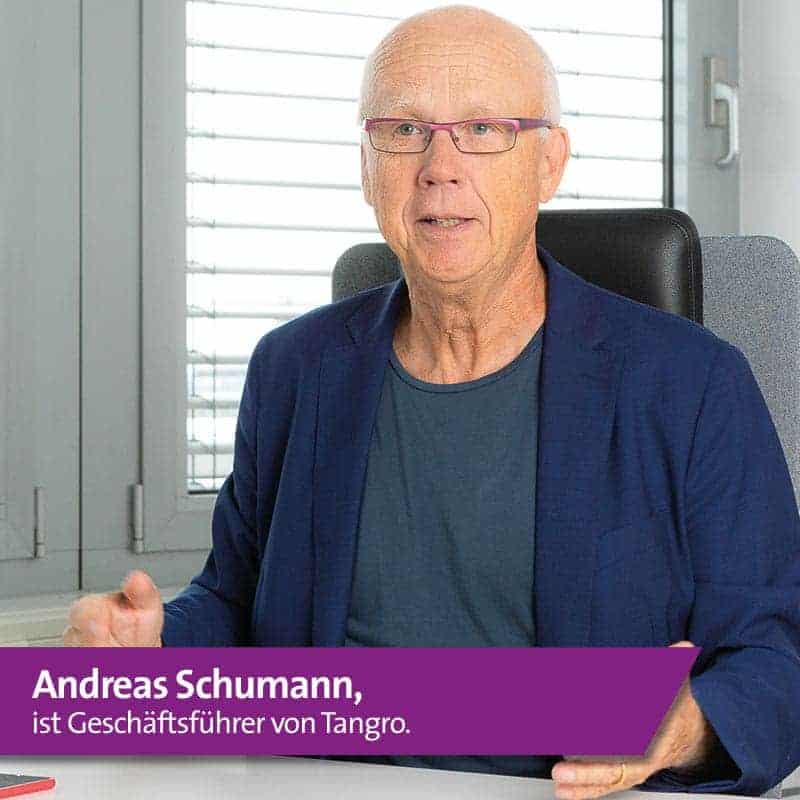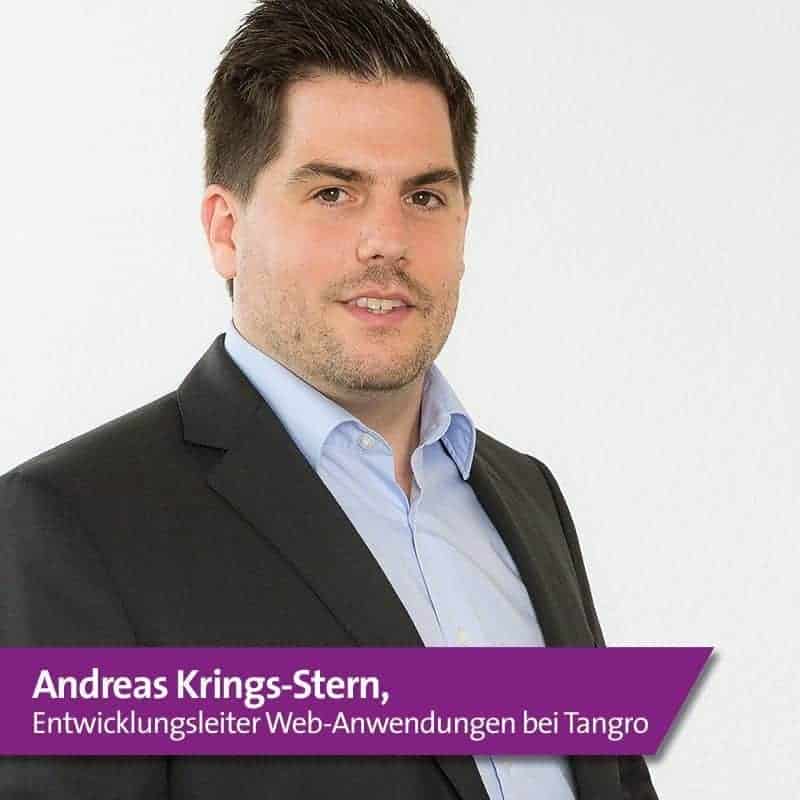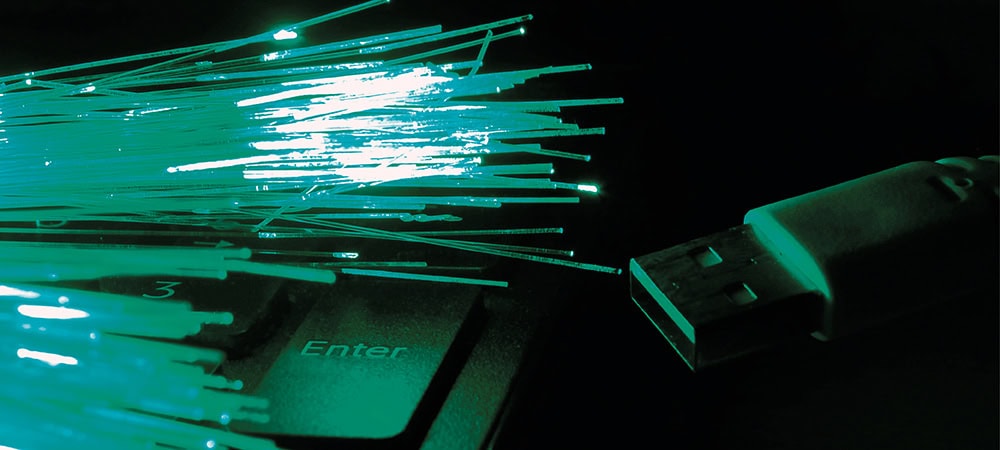Digitization pragmatically


Pragmatism also means preserving what is good and seeing IT as added value and not as a tool for its own sake. A pragmatic digital transformation is a major challenge and requires a great deal of "life experience".
The desire to change something because you can is often great. The question is therefore how sensible and sustainable the change is. The available IT offers enormous potential.
But you should be aware of this: If digital transformation is a menu with seven courses, we have just reached the greeting from the kitchen.
Combining old & new
Andreas Schumann, founder of Tangro, a solution provider for document inbound processing in SAP, can take a pragmatic approach to the current challenges because he has the life experience from numerous previous transformations.
"My first major customer, Nestlé, wanted to retain the advantages of in-house order entry. The last fully qualified sailor from order development left the ship - and Nestlé had a problem.
We wanted to find the functions in the SAP system again. For example, the entry of four articles per item, the loading of the truck during order entry, etc."
Then, as now, it was the business processes and only then the information technology. Andreas Schumann saw this as an opportunity to implement his concepts in a customer scenario:
"The hardest part was convincing Nestlé that a small software company could do what big SAP refused to do.
My SAP past and the support of an SAP colleague who believed in me, and finally a fearless Nestlé manager, also helped."
The affinity to SAP came about through an employment in Walldorf, but it was not a pronounced career aspiration.
"As a teenager, I thought about everything except what I wanted to do when I grew up. Back then, sport, especially soccer and table tennis, was my purpose in life."
The start at SAP was similarly sporty:
"During my job interview with Mr. Hopp, we immediately talked about tennis. Later, I had the opportunity to play with Mr. Hopp and Mr. Plattner from time to time.
Alongside the 'famous' tennis matches between Mr. Hopp and Mr. Plattner, these were of course the real highlights. There was also the challenge of dodging a flying racket from Mr. Plattner."
The years spent learning and traveling at SAP were helpful and predetermined for the later Tangro founder:
"I started in development at SAP. In general, there was a very pleasant atmosphere at SAP. At the beginning, we were still programming in assembler. I learned a lot, especially how important integration is and how complex applications can become.
After a few years in application development, the topic of EDI came up. I took on a staff function in which I was able to coordinate all of SAP's EDI activities across all applications."
The topic was new and innovative at the time: to this day, EDI messages consist of many segments such as address, delivery conditions, payment terms, etc., which are reused in many different messages - be it in an order, a shipping notification or an invoice.
"This method inspired me to come up with the idea of assembling applications from software building blocks - from building blocks that can be reused without reinventing the wheel each time - that was the birth of the later Tangro architecture and platform"
is how Andreas Schumann describes his IT discovery process in the E-3 interview.
"Unfortunately, or thankfully, I was unable to convince anyone at SAP to take up this approach for the SAP development environment.
But since I didn't want to give up on the idea under any circumstances, I set out to pursue my goal and threw myself into the adventure of self-employment and later into founding a company."
Andreas Krings-Stern, Head of Web Application Development at Tangro, knows that, from a pragmatic point of view, the EDI topic from back then is still just as valid today:
"Even if everyone is talking about digitalization at the moment, the idea is by no means new. The exchange of structured electronic business data has been taking place via electronic data interchange for decades."
Tangro foundation
"The naming was also influenced by the software architecture, by building blocks that can be reused"
explains Schumann.
"There is an Asian game called Tangram. There you can put together different figures from triangles. Tangram became the artificial name Tangro.
If you analyze a company's processes, you quickly see that there are always gaps and media disruptions"
is how Andreas Schumann describes the real IT environment:
"We wanted to improve that."
But it was and is not just about automation. Andreas Schumann is also concerned with how to achieve this goal as efficiently as possible. The reuse of software modules and the modeling of processes play a major role in this:
"The modeling of processes followed the understandable desire to reuse coding once it has been created as often as possible. To do this, it makes sense to bundle coding for a task into software modules, put them in a sensible order and link them together.
Inevitably, I came up with the idea of using process models for this. However, our process models only represent the part of the company that is supported by software."
Significant parts of the overall process are still handled by people, Schumann also knows. One example is the implementation of a change request at a Tangro customer.
"We now work with Business Process Management, which is always linked to our processes where it makes sense to do so. These processes, in turn, offer plenty of scope for new applications."
The SW patent
The five SAP founders resigned from IBM because the global IT corporation saw its future more in hardware than in software at the time. Andreas Schumann's belief in software was similarly strong and he created a patent for software in 2011.
"In the history of software development, there is a long tradition of developing software with components without ever achieving a breakthrough. People have often tried to generate code - for me the wrong approach.
The more I got into the subject, the more I realized that reusing software components was the key to developing software more effectively and flexibly with improved quality"
Andreas Schumann explains his very personal approach to the "software" challenge. And he sketches out his algorithmic solution:
"However, there were a few problems to solve: How granular should a software component be? How can software components be combined in any order? Can process models control the flow of applications as simply as possible?
The solution to these problems and a few more was part of my invention. The reward for this effort is a European and American patent."
The advantages of these software patents are obvious:
"The principle of reusing software modules and graphical process modeling, from which complete applications are created, increase the development speed many times over"
Schumann can report based on the work of his own software workshop.
"Quality also benefits from this. For example, we developed the Tangro OC product - i.e. order confirmations on the purchasing side - within 15 man-days, despite the non-trivial challenge of recognition logic based on unstructured data and connection to SAP function modules. This was followed by a further 15 days of the usual fine-tuning - i.e. testing and quality assurance - and the product was launched on the market."
E2E & Automation
With a new CRM system that is still under development, SAP has revived the E2E concept: logical process chains are to be mapped in holistic end-to-end scenarios - for R/3 users this idea is naturally not all that new, but technical options such as cloud computing now enable more efficient solutions to problems.
"We will certainly not bring E2E tools to the market - we sell software solutions"
defines Tangro Managing Director Schumann and adds:
"We see E2E as a process that starts with the customer and ends with the customer. It's about analyzing and optimizing the business process.
From this perspective, Tangro solutions already cover much of what is understood by E2E. I'm thinking of the order-to-cash and purchase-to-pay process."
Alexander Oberle, Head of SAP Product Development at Tangro, adds in the E-3 interview:
"The cost savings from automating order processing are huge."
Supplement & optimize
The goal of many existing SAP customers has hardly changed since Tangro was founded: Supplementary and optimized functions should be seamlessly integrated into an existing ERP system in order to increase the degree of automation.
This pragmatic approach is also Tangro's digital transformation secret. In addition to E2E, the term "automation" is experiencing a revival in the form of RPA, Robotic Process Automation.
The definition of RPA is according to Wikipedia: Software robots are applications that imitate human interaction with the user interfaces of software systems. Software robots work in a similar way on the user interface as a human would. (end of quote)
"That sounds a lot like SAP's outdated batch input process"
says Andreas Schumann spontaneously in the E-3 interview.
"As far as batch input is concerned, it is not without reason that SAP has abandoned this path and opted for interfaces, for performance reasons among others. Quite apart from that, the UI is also an interface, so what?
Interfaces must be understood. An ERP system is generally not designed to communicate directly with another ERP system, see also E2E, as it is in the nature of things that the interface of the addressee is unknown. Which brings us to EDI - not exactly new either."
Fiori vs. Tangro UI
"At the customer day three years ago, a former SAP colleague approached me and said: "It all looks like SAP. Where are the Tangro applications?
He hadn't even realized that everything he saw wasn't actually SAP, but Tangro - that probably speaks for "integration"
is how Andreas Schumann describes the success of embedded SAP.
The user quickly feels at home in Tangro applications because there are no breaks, no upstream applications for the SAP administrator. The user interface is important, but Schumann says:
"We prove every day that it works without Fiori. If our customers want Fiori, they get Fiori. If they prefer to work with the Tangro HTML5 UI, they get the Tangro HTML5 UI."
Embedded SAP
The added value of Tangro solutions does not always lie in the reinvention of processes, but often rather in the harmonization with existing systems such as SAP R/3 or ERP/ECC 6.0.
"There were, of course, suppliers who were already on the market before us"
says Schumann.
"What was new was our 'SAP embedded' approach, as we call it: mapping the processing of the document within SAP. What was also new was that we focused exclusively on SAP customers, according to the motto: only one thing, but the right thing."
Is this "old" embedded still possible, desired and necessary today under S/4 and Hana? SAP "embeds" many functions in the Hana platform and SAP Cloud Platform and this creates a certain amount of competition with other software houses, at least on paper.
"SAP currently has no comparable function as far as the Inbound Suite is concerned"
Andreas Schumann is certain. With the Inbound Suite, Tangro offers an innovative complete solution for processing incoming documents in SAP.
"Should SAP invest in this direction, the question arises: how suitable are these solutions? In over ten years, the Tangro Inbound Suite has achieved a range of functions that covers the most diverse requirements of our customers. SAP will find it difficult to make Tangro products obsolete in the foreseeable future"
says Schumann.
SaaS ERP
Proximity to the user is Tangro's unassailable advantage. While SAP increasingly has to serve a very heterogeneous, diffuse global market, Tangro can concentrate on "real business life" and Andreas Schumann knows that his company is very well prepared to react to unforeseeable changes.
"We have been developing a SaaS ERP solution for the cloud with a small team for some time now. The Tangro architecture comes into its own with this approach, as there is no need to take SAP application structures into account.
The SaaS ERP solution is supplemented by functions from the Inbound Suite. The target group is SMEs. This ERP for ISV (Independent Software Vendor), which we already use to map a large part of our processes, will form the basis for further ERP systems in the area of services.
We assume that around 90 percent of existing processes can be reused here, so that development costs are as low as possible, the applications are tailored precisely to the customer's needs and we can deliver new solutions comparatively quickly.
The tailor-made applications can be put into operation without a great deal of customizing effort. This also results in individual encapsulated applications, such as absence management or fleet management, which can also be operated on-premise by SAP customers if operation in the cloud is not desired."
Cloud computing
"I wanted to optimize all of Tangro's internal processes so that we could achieve the highest possible degree of automation. First of all, I looked around to see if there was any software that could meet our needs at a reasonable price.
The result was not very encouraging. So I decided to develop my own solution, which would later be made available in the cloud"
Andreas Schumann describes his personal path to cloud computing.
"As mentioned above, this also opened up the possibility of another mainstay, with SaaS products that can be distributed worldwide.
The market for small and medium-sized companies is very attractive. These companies find it difficult to have their own IT department. The cloud offers a way out."
There is no way around cloud computing. The advantages are obvious. The customer can concentrate on their core competence. Experts take over the provision of computing services.
"As the labor market for IT experts is slowly becoming tight, cloud computing makes sense"
Schumann knows from his professional experience, but he takes a differentiated view of cloud computing:
"There is a risk that for some time there will only be standard software that does not take into account the individual requirements of customers. I think the issue of security is better handled by cloud providers than in-house IT."
Cloud providers have a vested interest in ensuring the security of customer data. Because if this is not guaranteed, they will quickly disappear from the market.
"The outstanding unique selling point of the Tangro Cloud is that the software architecture is designed to strictly separate our customers' individual requirements and implement them in the shortest possible time - just as we have long practiced with our Inbound Suite products"
Andreas Schumann explains the wishes and needs of the market. Tangro relies on the successful and efficient interaction of software modules. These are granular modules that are initially completely detached from the interaction between Tangro and SAP - see SaaS solutions.
"I'm pretty sure that SAP wants to do more and more itself. I think SAP sees the opportunities it offers partners, which is undoubtedly true, but hardly the reverse, that partners could make SAP even stronger."
And finally:
Is the digital transformation an opportunity or another compulsory exercise and what contribution can and will Tangro make to this project? At the end of the E-3 interview, Andreas Schumann once again emphasizes the importance of pragmatism:
"Digital transformation is an issue. Companies often don't know how to tackle the topic. The challenge for us is to offer pragmatic approaches. Document receipt in the form of digitization of receipts, SAP-to-SAP data exchange and EDI are topics that drive us."









